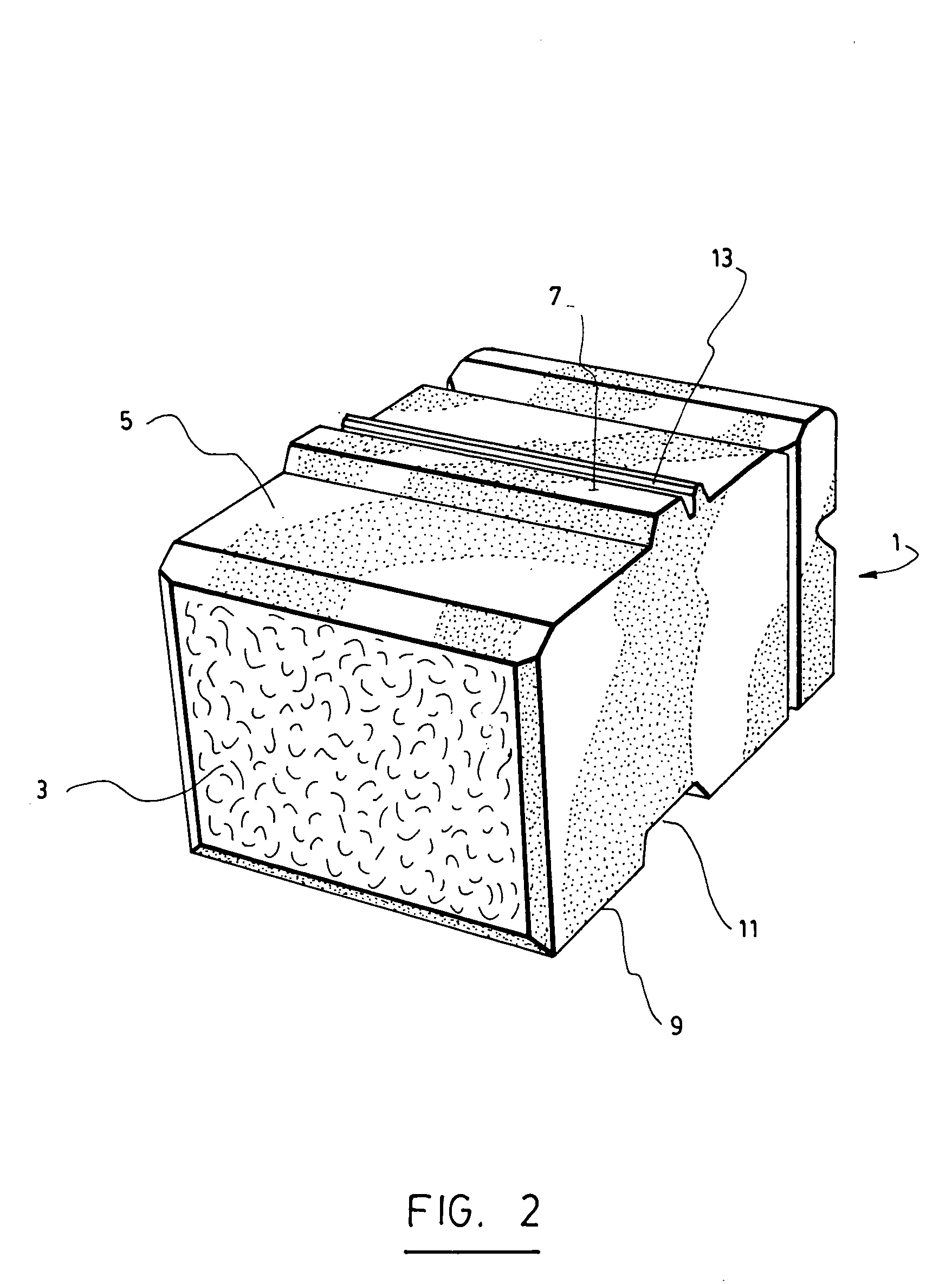Split key segmental retaining wall system
a technology of segmental retaining walls and key segments, which is applied in the direction of bulkheads/piles, soil preservation, artificial islands, etc., can solve the problems of limited space at the top of the wall, limited use of srw units in their current configuration (battered only), and modularity, and achieves the effect of small width
- Summary
- Abstract
- Description
- Claims
- Application Information
AI Technical Summary
Benefits of technology
Problems solved by technology
Method used
Image
Examples
Embodiment Construction
[0036]As clearly shown in FIGS. 2 and 3, the SRW block 1 according to the invention has:[0037]a front side 3;[0038]a top side 5 with a transversal tongue 7 of a given width projecting from it, the tongue 5 extending at a first distance D1 from the front side 3; and[0039]a bottom side 9 with a transversal groove 11 made in it, the groove being sized to receive the tongue 7 of another similar block positioned below and thus to allow stacking of the blocks (see FIGS. 8 and 10), the groove extending at a second distance D2 from the front side that is smaller than the first distance D1.
[0040]As also shown, the first and second distances D1 and D2 are selected so that the tongue 7 and the groove 11 are offset with respect to each other over a distance that is smaller than the width of the tongue 7.
[0041]In accordance with the invention, the tongue 7 is provided with a splitting groove 13 sized and positioned to allow splitting of the tongue 7 with a splitting tool along a transversal line...
PUM
 Login to View More
Login to View More Abstract
Description
Claims
Application Information
 Login to View More
Login to View More - R&D
- Intellectual Property
- Life Sciences
- Materials
- Tech Scout
- Unparalleled Data Quality
- Higher Quality Content
- 60% Fewer Hallucinations
Browse by: Latest US Patents, China's latest patents, Technical Efficacy Thesaurus, Application Domain, Technology Topic, Popular Technical Reports.
© 2025 PatSnap. All rights reserved.Legal|Privacy policy|Modern Slavery Act Transparency Statement|Sitemap|About US| Contact US: help@patsnap.com



